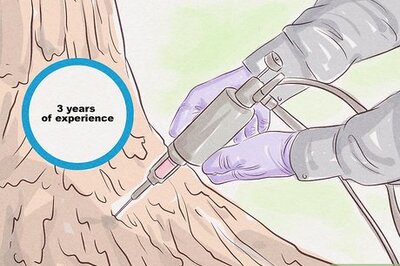
views
Tokyo: A water leak from Japan's tsunami-crippled nuclear power station earlier this month resulted in about 100 times the permitted level of radioactive material flowing into the sea, operator Tokyo Electric Power Co said on Saturday.
TEPCO said the leak discovered on May 11 at a storage pit outside the No 3 reactor of the Fukushima Daiichi had started in the early hours of the previous day and lasted for 41 hours, releasing 250 cubic metres of contaminated water into the sea.
An estimated 20 terabecquerels of radioactive material escaped as a result, a company spokesman told a news conference.
Since a devastating March 11 earthquake and tsunami in northeastern Japan disabled the plant's cooling systems, TEPCO has been pouring water and seawater on the reactors to prevent disastrous meltdowns.
The utility has scrambled to find means of storing the contaminated water, some of which has seeped into the ocean and raised concerns from neighbouring countries.
In April, the plant's No 2 reactor developed similar leaks, which the operator managed to seal with liquid glass and other substances. TEPCO later intentionally released low-level radioactive water into the sea after it ran out of storage capacity for more highly contaminated water.
The latest study on the April leak from the No 2 reactor showed it included a total 4,700 terabecquerels of radioactive material in 500 cubic metres of water.
The company reported these new findings to the government's safety agency late on Friday.


















Comments
0 comment